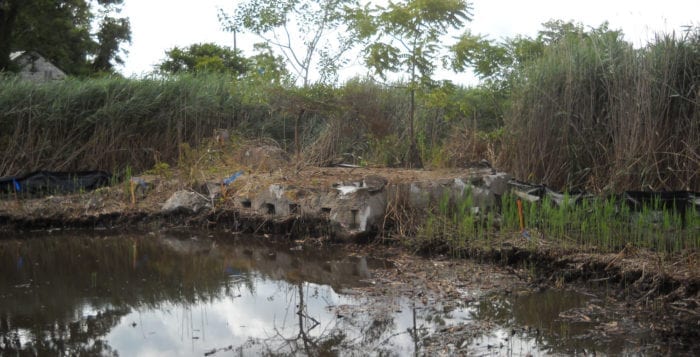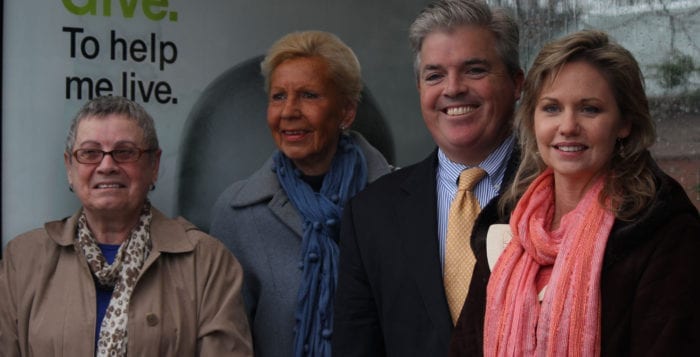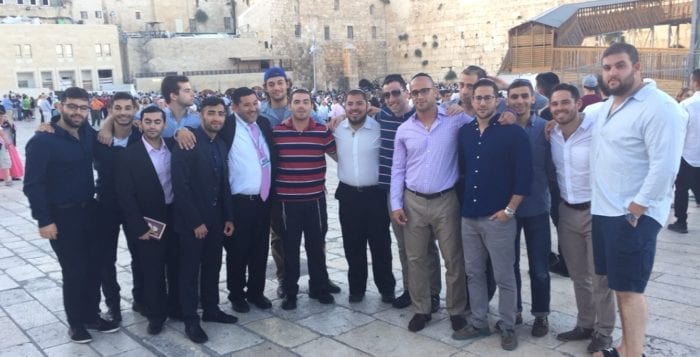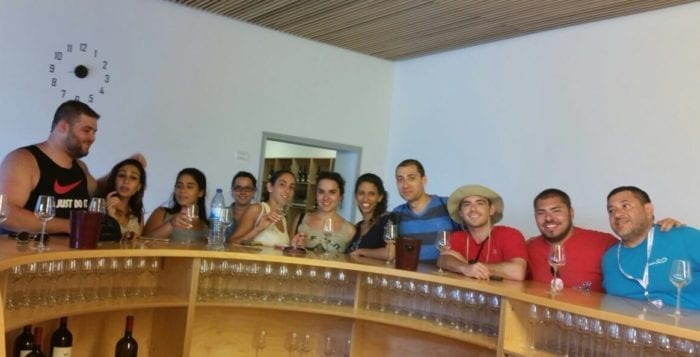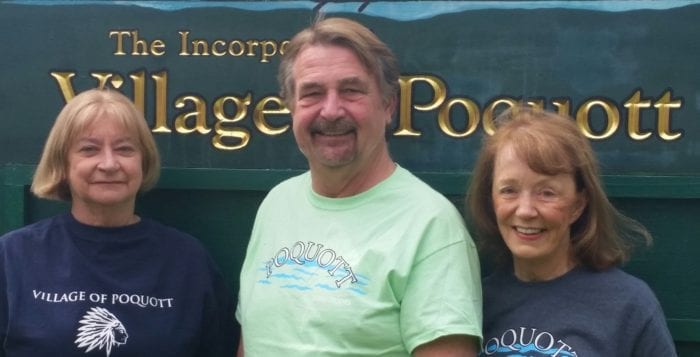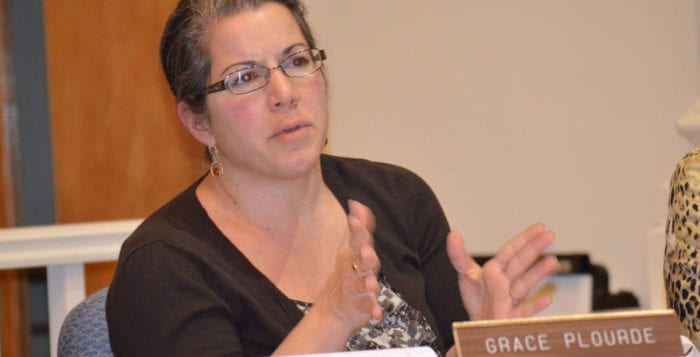By Edna Giffen
When doing a project to benefit present and future generations, a municipality uncovered an item from the past.
As part of a stormwater mitigation project, the Town of Brookhaven has cleared a large area on the northeast corner of Mount Sinai Harbor adjacent to Shore Road. During this clearing, a cement structure was uncovered: the last remnants of the Brookhaven Sand and Gravel Company.
During the early 1900s, cities were expanding and cement was needed in ever-increasing amounts, with Long Island sand being considered the highest quality.
Companies looked all over Long Island for easily accessible quantities of sand, and in February of 1909, The Port Jefferson Echo, the local newspaper at the time, started reporting on activities concerning mining in Mount Sinai.
On Feb. 6, 1909, New York parties purchased a small piece of bayfront for a dock in the northeast corner of the harbor. This group had already purchased a total of 64 acres of sandy hills across Shore Road, and the American Sand and Gravel Company brought in a pile driver to build a 200-foot dock. A mud digger was brought in to dig a channel to the harbor entrance on the northwest side of the harbor to permit barges to come and go as needed. A railroad trestle was started near the mining area.
In 1910, the American Sand and Gravel Company, which had started this process, sold everything to the newly formed Brookhaven Sand and Gravel Company.
The company moved quickly. The railroad trestle was torn down and rebuilt in a more substantial manner to stand 16 feet above Shore Road, and a building for refining the sand was built on the property. The original plan was for the refining plant to help with housing development, but it became apparent that it’s real purpose was a full-scale mining operation.
Equipment was brought in, including a steam shovel, a donkey engine train and cars to carry the sand over the trestle. Crews of men were brought to work on the construction and the sand mining. By 1912, everything was ready to start the mining operation.
While the work was being done, there were concerns as to the benefits of the operation to the village, as evidenced by an item of Mount Sinai news in the Echo dated April 17, 1909.
A piece in the paper read: “The question whether the sand pile operation at Mount Sinai will bring into the village more money than would the desirable resident community, which they may drive away, is still being canvassed by the inhabitants. There is, however, no doubt of the dismay which has been created in the minds of some of those residing near the proposed sand dump, whose property is already seriously depreciated. On the other hand, it is claimed that if the talk of dredging of the harbor should prove to be of such a character as to be of benefit to the public, as well as to the sand company, the villagers will have cause to be grateful.”
Despite this, sand mining finally began in August 1912.
During the night of Sept. 3, 1912, the plant and part of the trestle were destroyed by fire. The cause was never discovered, the company did not rebuild and everything was left as is.
In 1913, local and summer residents petitioned the Town of Brookhaven to have the lease of the Brookhaven Sand and Gravel Company cancelled as the company was no longer in operation.
The steam shovel, donkey engine and cars were taken to the Miller Place Railroad Station and sent to Canada in July 1916.
Finally, in November 1917, the trestle over Shore Road was removed.
Up until a few years ago, the wooden pylons from the dock were visible and the cement was recently exposed. The foundation of the refining plant is all that is left of this once controversial episode in Mount Sinai history.
Edna Giffen is a 12th-generation Miller Place resident now living in Mount Sinai. She is a local historian, archivist and current president of Miller Place-Mount Sinai Historical Society.

